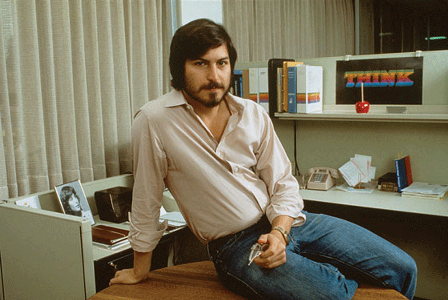Anyone who’s studied Silicon Valley for about five minutes knows that community’s shocking success is a hybrid of public-private investment, not just some free-market dream realized. Before the Y Combinator, there’s often an X factor, namely a government incubator like DARPA which births and nurtures ideas until they can crawl into the arms of loving venture capitalists. The Internet, of course, is the most obvious example. Even the transistor itself sprang from Bell Labs, which was essentially a government-sanctioned monopoly.
The economist Mariana Mazzucato hasn’t been shy about shooting down the excesses of the sector’s mythologizing, which boasts that brilliant upstarts with startups simply think (ideate!) their way into billions. Not quite. These lone creators don’t only lack the funds to develop an Internet or transistor, Mazzucato doesn’t believe they have the time or stomachs for such risks, either. The market demands corporations opt for safer short-term gain or the shareholders will revolt. (Look at the blowback Google’s received for its moonshot investments, perhaps one reason it reorganized itself into Alphabet this week.) The companies aren’t, then, caged lions held back by regulation, but, as Mazzucato sees it, usually kittens unable to roar on their own.
From John Thornhill at the Financial Times:
Even Silicon Valley’s much-fabled tech entrepreneurs are not as smart as they like to think. Although Mazzucato lavishes praise on the entrepreneurial genius of the likes of Steve Jobs and Elon Musk, she says their brilliance tells only part of the story. Many of the key technologies used by Apple were first developed by public-sector agencies. Most of the key technologies that do the clever stuff inside your iPhone — including its geo-positioning system, the Siri voice-recognition service and multi-touch screen — were the offspring of state-funded research. “Government has invested in basic research, it has invested in applied research, it has invested in concrete companies [such as Tesla] all the way downstream, doing what venture capital should be doing if it was really playing the role it says it plays,” she says. “It is an incredibly active, mission-oriented role.”
One of the original engines of Silicon Valley’s creativity, she argues, was the Defense Advanced Research Projects Agency (Darpa), founded by President Dwight Eisenhower in 1958 following the alarm caused by the Soviet Union’s launch of the Sputnik rocket. Darpa, run by the US Department of Defense, has since pumped billions of dollars into cutting-edge research and was instrumental in developing the internet. According to Mazzucato, the publicly funded National Institutes of Health has played a similar role in nurturing the US pharmaceuticals industry. The Advanced Research Projects Agency-Energy (Arpa-E), set up by President Barack Obama and run by the US Department of Energy, is designed to stimulate green technology.
Mazzucato points to the critical role played by government agencies in other economies, such as China, Brazil, Germany, Denmark, and Israel, where the state is not just acting as a market regulator, it is actively creating and shaping markets. For instance, the Yozma programme in Israel that provided the funding and expertise to create the so-called “start-up nation”. “My whole point to business is, ‘Hello, if you want to make profits in the future, you had better understand where the profits are coming from’. This is a pro-business story. This is not about socialism,” she says.
Her arguments stray into more radical territory as we discuss how the fruits of this technological innovation should be distributed. If you accept that the state is part responsible for the success of many private sector enterprises, she says, should it not share in more of their economic gains?•
Tags: John Thornhill, Mariana Mazzucato

